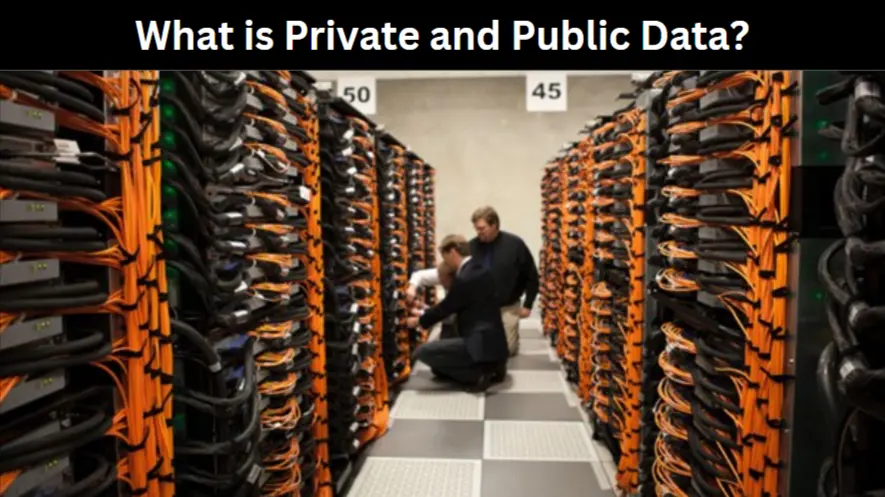The existence of numerous data privacy laws in various jurisdictions puts a spotlight on private and public data. And given that businesses rely on data to make decisions, train machine learning models and artificial intelligence systems, extract insights, and identify the needs of consumers, a clear distinction between the two types of data is necessary. This is why this article intends to answer the question: what is private and public data?
Private Data vs. Public Data
Private data refers to any data that only the owner or creator should access. Alternatively, people with qualifications such as registered accounts at a corporate or consumer level can access private data. On the other hand, public data is any data that anyone can access without express or prior permission, qualifications, or privileges.
In the context of a company, data is considered private if it is available to the employees only. In certain instances, some private data is only available to a certain cadre of employees, mostly high-level executives. Conversely, it is regarded as public if it is available to all employees as well as entities outside the organization.
To better understand the differences between the two data types, let’s consider a recent hack that affected a technology company that provides ride-hailing, freight transportation, and food delivery services. The hacker managed to access the platform’s detailed financial information and IT systems, including a security software, the back-end controls of its cloud-computing console, and an admin dashboard for the corporate email system. Ordinarily, such data falls in the category of private data as only authorized users can access it, hence why the hack made headlines.
On the other hand, using the platform’s website shows several types of public data. These include the names of the members of the executive team and board of directors, press releases, investor presentations, company history and key milestones, media assets, job openings, and more.
Similarities between Private and Public Data
- Private and public data contain insights into a product or group of people
- Private and public data can be collected and extracted using data collection tools
Differences between Private and Public Data
| Private Data | Public Data |
| You must have permission, qualification, or special privileges to access the data | You can freely access the data without having permissions, qualifications, or privileges |
| This data is hidden behind passwords or login pages | It is available on public fora such as social media platforms, news, government, and company websites, and journals |
| This data requires proper handling; failure to do so might attract lawsuits | Public data does not require proper handling |
| Private data contains sensitive data | Public data does not contain sensitive data |
Data Extraction
Indeed, both private and public data can be extracted using data collection tools. However, the extraction of public data is more common than private data. This is especially so because public data is more readily available. Furthermore, several privacy-focused laws criminalize the extraction of private data.
Public data is used in multiple applications because it offers numerous advantages. These include:
- It is used to gain consumer insights, enabling businesses to better understand their customers
- Jobs and career pages provide data on job openings, allowing people looking for new jobs to apply
- Data on job openings also enables job aggregator sites to populate their pages, driving traffic and increasing revenue
- Pricing data enables competing companies to come up with better pricing strategies
- Reviews inform companies on the level of customer satisfaction and the areas to improve
Against this backdrop, how can you go about extracting public data? There are several ways to collect public data, including web scraping, downloading government documents, company presentations, and more. Some websites also freely offer access to data. Examples include Google Trends and government data pages, e.g., data.gov (US) and data.go.uk (UK). Of these different approaches to collecting data, web scraping offers an avenue by which you can gather publicly available data from different sources within the shortest time possible.
What is Web Scraping?
Web scraping refers to the process of collecting data from websites. It is mostly used in reference to the automated form of data collection using bots or software known as web scrapers. However, the term also denotes manual methods of web data harvesting, such as copying and pasting.
A web scraper is designed to automatically send GET and POST requests (these are examples of the most common HTTP/HTTPS request methods). It then parses the HTML files sent by the web servers as part of their responses. Parsing converts the unstructured data to a structured format based on the web scraping instructions. Finally, the web scraper stores the extracted and now organized data in a CSV or JSON file for download. In this regard, a web scraper is used to extract public data from websites. Look at this site for an example of a web scraping tool.
Conclusion
Private data is any data that is not readily available without necessary permissions, qualifications, or privileges. In contrast, accessing public data does not require such permissions, qualifications, or privileges. Examples of public data include information contained on web pages, which can be collected through a process known as web scraping
